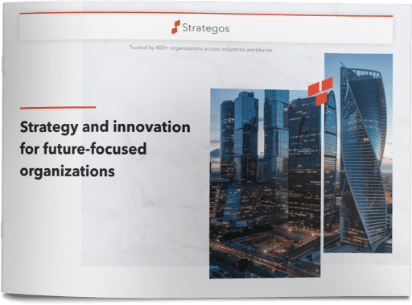CEOs have to face the same pressures every day, delivering short term results that satisfy an ever demanding market and a share price that reflects this. And since most if not all CEOs realize visibility of innovation results is a major contributor, many will push their organization to deliver innovations time and time again. Just look at the recent news coverage of Apple. At the first sign of not delivering the amazing innovations that we have come to expect the pressure mounts, the share price falls. Whether right or wrong it is today’s reality.
The more visionary CEOs understand that innovation is as much about purpose and culture as it is about processes and investment that enable new ideas to reach the marketplace. Regardless of recent events Apple has demonstrated that this connection exists.
While innovation methods and processes are easier to get to grips with, culture and purpose are more elusive and difficult to get right. Is it even possible to deliver both at the same time? We would argue it is. We have had the good fortune to work with many visionary CEOs over the years and found that “transformation through innovation” is a very positive (and often necessary) way to stimulate culture change within an organization while delivering results to the bottom line.
Where do innovation and culture meet and why does it help to focus on both at the same time?
1. Strategic direction
In a previous article by my collegue Gary Getz he writes about the link between strategy and innovation and how the results from developing new perspectives around customer needs, core competencies and changes in the external environment help you create strategic options as well as new business ideas. Another important aspect of “strategic aiming” is the positive effect it has on enabling culture change. It gives an organization a sense of purpose, the answer to “why I get up and go to work”. Whether you aim at something grand like GE’s “solving the world’s environmental problems” or something simpler, purpose is essential to stimulate cultural change as it is to innovation.
2. Removing barriers to innovation
An existing company’s culture hides many barriers to innovating and it is essential to identify these before we start on any innovation initiative. The beliefs a company has about how it needs to operate, what the customer wants and how it competes are deeply engrained and have a significant influence on its culture and its ability to innovate. These beliefs or orthodoxies are the explicit but to a large extent implicit rules by which the company behaves. Rules are not inherently bad, in many ways they allow an organization to perform in an efficient manner. It’s the ones that may have worked in the past but are no longer valid for the future that we need to question and potentially eliminate to allow innovation to flourish. Challenging the rules that don’t apply anymore enable people and organisations to change and lead us to new opportunities.
3. Changing the way we work
We often collaborate with teams that are already passionate about innovation but lack the tools and techniques to make innovation happen. If we want innovation to outlast a CEOs term in office then it needs to be systemic. In 2009 Suk-Chae Lee, CEO of Korea Telecom concluded the company needed to change to remain competitive far into the future. Key to realizing this change was embedding a new way of working, a detailed set of approaches that supports the innovation process, allow the teams to develop new perspectives around customer needs, design innovative business models and bring these to market in a more agile, iterative way. Changing the culture by changing the work we do to innovate successfully. (read more about the KT case here)
4. Connecting employees with customers
In an article by my collegue Bud Taylor he states that change only succeeds if we connect our employees to our customers. Innovation is link between these two. Teams aren’t focused on changing a culture, its serving the customers that they get most of their satisfaction from. When we support teams on innovation initiatives their engagement comes from using the tools we give them to discover unmet customer needs. We believe people are intrinsically motivated to generate new ideas, solutions to problems and better ways to serve customers. Removing the barriers that stop them from seeing good ideas realized increases engagement, fuels the company’s ability to innovate and changes people’s attitudes and behaviors.
Transformation through innovation is always at play when we work with clients on innovation initiatives. Understanding how innovation and culture are linked allow you to leverage one for the other and vice versa. Ultimately this will help you make innovation last and deliver better results.





